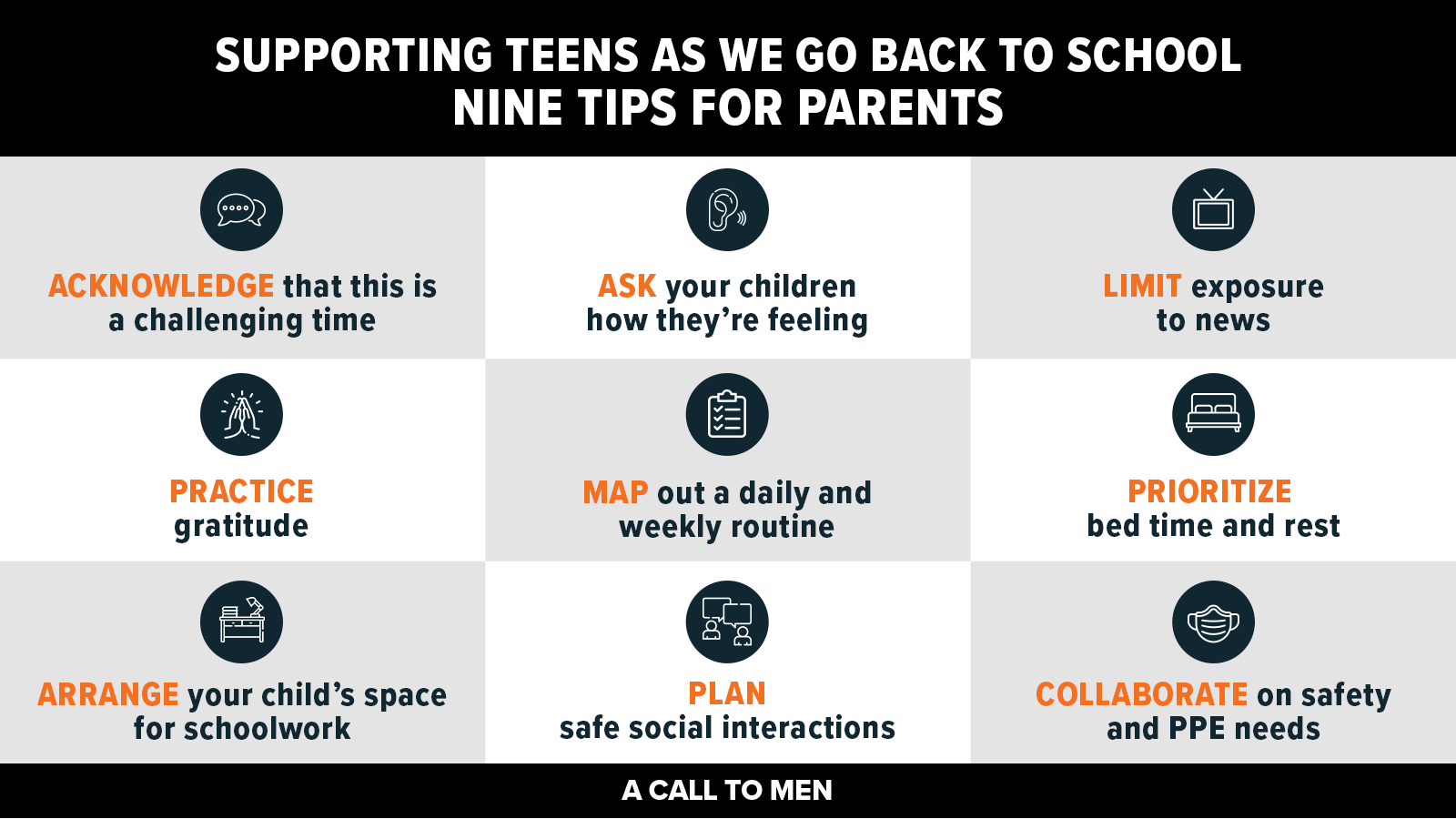Supporting Teens As They Go Back To School: Nine Tips for Parents
Students are facing so many changes as they return to school this year. The pandemic is forcing all new ways of learning—some students will go back virtually, some on a very limited in-person schedule, and some returning to a full schedule with new mandates to protect the health of the school community. And if living through a global pandemic wasn’t enough, Black and Brown students are living through what is likely the most traumatic time in our history since the Civil Rights movement. In addition to the trauma of witnessing violence against Jacob Blake, George Floyd, Breonna Taylor, and Ahmaud Arbery, Black families are coping with the effects of historical trauma and intergenerational racism.
All this anxiety, uncertainty, pain, sadness, and anticipation are coming into classrooms across our country. While everyone—young and old, all races and genders—is experiencing these things, our boys, and especially our Black and Brown boys, need a little extra attention.
We socialize our girls to value communication and sharing. But our boys are often taught to shun their feelings and reject their fears. That is really dangerous in a time like this. Boys might be feeling the pressure to “man up” or that familiar phrase “boys don’t cry” might be echoing in their minds. Their silence might lead us to believe they are handling everything okay. But let’s get real: this is not normal for any of us. We are beautiful, strong, complex people and while we are resilient, we are not unaffected.
It is common to have back to school anxiety in “normal” times, so given all that is happening, we should prepare for heightened anxiety among students this year. Keep an eye out if your child is more irritable or defiant than normal, if there are disruptions in sleep patterns, loss of appetite, lack of concentration, less energy, sadness or crying, and physical symptoms like nausea. These can all indicate anxiety.
I have talked with some of the most thoughtful parents and caregivers in our organization to compile some strategies that are working for them. We want to share them with you in hopes you might find some of them useful.

1. Acknowledge all that is happening in the world. Just by saying it out loud, you open a door for your child to communicate how they are feeling about all they are experiencing.
2. Ask your children how they are feeling. It seems obvious but so often, we get focused on reading the school emails, making sure they have the supplies, and reworking schedules, that we forget to ask our kids how they feel about all this change.
3. Limit your children’s exposure to the news. The violence they see on television and social media can have a direct impact on their mental health. Have designated times in the day or evening to disconnect. Go for a walk or play cards.
4. Start practicing gratitude. At dinner or during the ride to school, have each person name one thing they are grateful for that day. Science has proven that practicing gratitude improves your well-being and makes you happier.
5. Prioritize bedtime and rest. It has been so challenging to maintain a routine during this pandemic. But we know that rest is directly linked to resiliency. Without rest, there is no opportunity to recover—mentally or physically.
6. If your child will be going back to school virtually, work with them to create a comfortable and effective workstation in your home that balances the need for supervision with limited distractions.
7. Decide if it makes sense for your child and your family to organize a socially distanced gathering each week for a small group of your child’s friends to combat loneliness. Maybe it is outside time at the park or a weekly virtual gathering to play a favorite video game.
8. If your child will be going back to school in person, discuss what PPE that meets school requirements they feel would be most comfortable and effective. If your child feels they have a bit more control over the situation, it will increase their comfort level.
9. Map out your child’s new routine with them as best you can. Setting expectations and eliminating uncertainty can help decrease anxiety.
Please tweet me @TonyPorterACTM if you have other strategies that are working well right now.
And to all the administrators, educators, parents, caregivers who are carefully and thoughtfully planning for students to return to school, I see you. I’m sending you extra encouragement and strength. I know how much you are holding. Your students are blessed to have you looking out for them.